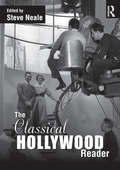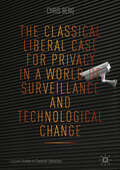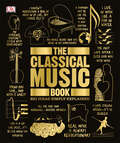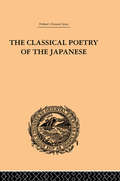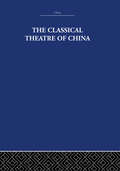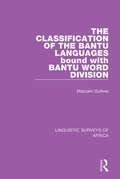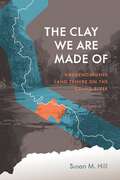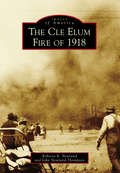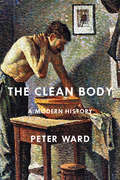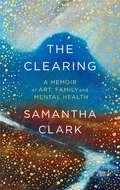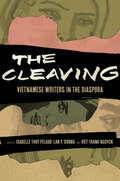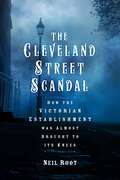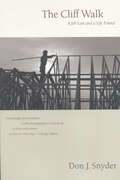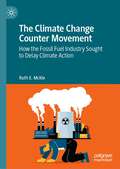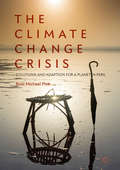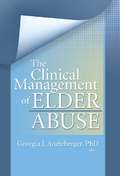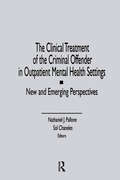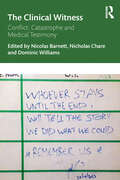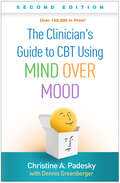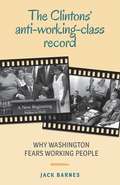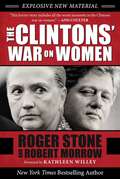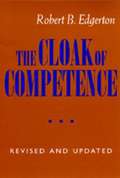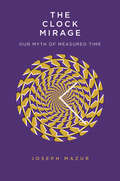- Table View
- List View
The Classical Hollywood Reader
by Steve NealeThe Classical Hollywood Reader brings together essential readings to provide a history of Hollywood from the 1910s to the mid 1960s. Following on from a Prologue that discusses the aesthetic characteristics of Classical Hollywood films, Part 1 covers the period between the 1910s and the mid-to-late 1920s. It deals with the advent of feature-length films in the US and the growing national and international dominance of the companies responsible for their production, distribution and exhibition. In doing so, it also deals with film making practices, aspects of style, the changing roles played by women in an increasingly business-oriented environment, and the different audiences in the US for which Hollywood sought to cater. Part 2 covers the period between the coming of sound in the mid 1920s and the beginnings of the demise of the `studio system` in late 1940s. In doing so it deals with the impact of sound on films and film production in the US and Europe, the subsequent impact of the Depression and World War II on the industry and its audiences, the growth of unions, and the roles played by production managers and film stars at the height of the studio era. Part 3 deals with aspects of style, censorship, technology, and film production. It includes articles on the Production Code, music and sound, cinematography, and the often neglected topic of animation. Part 4 covers the period between 1946 and 1966. It deals with the demise of the studio system and the advent of independent production. In an era of demographic and social change, it looks at the growth of drive-in theatres, the impact of television, the advent of new technologies, the increasing importance of international markets, the Hollywood blacklist, the rise in art house imports and in overseas production, and the eventual demise of the Production Code. Designed especially for courses on Hollywood Cinema, the Reader includes a number of newly researched and written chapters and a series of introductions to each of its parts. It concludes with an epilogue, a list of resources for further research, and an extensive bibliography.
The Classical Liberal Case for Privacy in a World of Surveillance and Technological Change (Palgrave Studies in Classical Liberalism)
by Chris BergHow should a free society protect privacy? Dramatic changes in national security law and surveillance, as well as technological changes from social media to smart cities mean that our ideas about privacy and its protection are being challenged like never before. In this interdisciplinary book, Chris Berg explores what classical liberal approaches to privacy can bring to current debates about surveillance, encryption and new financial technologies. Ultimately, he argues that the principles of classical liberalism – the rule of law, individual rights, property and entrepreneurial evolution – can help extend as well as critique contemporary philosophical theories of privacy.
The Classical Music Book: Big Ideas Simply Explained (DK Big Ideas)
by DKLearn about the world&’s greatest classical compositions and musical traditions in The Classical Music Book.Part of the fascinating Big Ideas series, this book tackles tricky topics and themes in a simple and easy to follow format. Learn about Classic Music in this overview guide to the subject, great for novices looking to find out more and experts wishing to refresh their knowledge alike! The Classical Music Book brings a fresh and vibrant take on the topic through eye-catching graphics and diagrams to immerse yourself in. This captivating book will broaden your understanding of Classical Music, with:- More than 90 pieces of world-famous music - Packed with facts, charts, timelines and graphs to help explain core concepts- A visual approach to big subjects with striking illustrations and graphics throughout- Easy to follow text makes topics accessible for people at any level of understandingThe Classical Music Book is a captivating introduction to music theory, crucial composers and the impact of seminal pieces, aimed at adults with an interest in the subject and students wanting to gain more of an overview. Here you&’ll discover more than 90 works by famous composers from the early period to the modern day, through exciting text and bold graphics.Your Classical Music Questions, Simply ExplainedFrom Mozart to Mendelssohn, this fresh new guide goes beyond your typical music books, offering a comprehensive overview to classical music history and biography. If you thought it was difficult to learn about music theory, The Classical Music Book presents key information in an easy to follow layout. Explore the main ideas underpinning the world&’s greatest compositions and musical traditions, and define their importance to the musical canon and into their wider social, cultural, and historical context.The Big Ideas SeriesWith millions of copies sold worldwide, The Classical Music Book is part of the award-winning Big Ideas series from DK. The series uses striking graphics along with engaging writing, making big topics easy to understand.
The Classical Poetry of the Japanese
by Basil Hall ChamberlainPublished in 2000, The Classical Poetry of the Japanese is a valuable contribution to the field of Asian Studies.
The Classical Theatre of China
by A.C. ScottFirst published in 1957. Besides tracing the history and development of the Peking Theatre, this volume explains acting techniques, stage costume and symbolism, musical forms and the various types of plays.
The Classification of the Bantu Languages bound with Bantu Word Division (Linguistic Surveys of Africa #11)
by Malcolm GuthrieThe first volume of this pair, The Classification of Bantu Languages, originally published in 1948, investigates the questions arising out of the use of the term Bantu. It establishes and illustrates the criteria used in identifying languages as members of the Bantu family. The technique used in classification is described and its results shown in the form of a series of descriptive classifications of each of the principal areas. As well as the map (not included in the volume due to modern methods of reproduction, but available to view on routledge.com), there is a complete list of languages classified in their groups. The second volume, Bantu Word Division published in the same year, discusses a question which for many years was the subject of protracted controversy, namely the dispute between the conjunctivist and the disjunctivist, with regard to word division. This pamphlet discusses word division from a different angle, and solves the problem in a more conclusive way.
The Clay We Are Made Of: Haudenosaunee Land Tenure on the Grand River
by Susan M. HillIf one seeks to understand Haudenosaunee (Six Nations) history, one must consider the history of Haudenosaunee land. For countless generations prior to European contact, land and territory informed Haudenosaunee thought and philosophy, and was a primary determinant of Haudenosaunee identity. In The Clay We Are Made Of, Susan M. Hill presents a revolutionary retelling of the history of the Grand River Haudenosaunee from their Creation Story through European contact to contemporary land claims negotiations. She incorporates Indigenous theory, Fourth world post-colonialism, and Amerindian autohistory, along with Haudenosaunee languages, oral records, and wampum strings to provide the most comprehensive account of the Haudenosaunee’s relationship to their land. Hill outlines the basic principles and historical knowledge contained within four key epics passed down through Haudenosaunee cultural history. She highlights the political role of women in land negotiations and dispels their misrepresentation in the scholarly canon. She guides the reader through treaty relationships with Dutch, French, and British settler nations, including the Kaswentha/Two-Row Wampum (the precursor to all future Haudenosaunee-European treaties), the Covenant Chain, the Nanfan Treaty, and the Haldimand Proclamation, and concludes with a discussion of the current problematic relationships between the Grand River Haudenosaunee, the Crown, and the Canadian government.
The Cle Elum Fire of 1918 (Images of America)
by Roberta R. Newland John Newland-ThompsonCle Elum, Washington, was founded in 1883 by Walter Reed and Thomas Gamble. The name, from Tle-el-Lum, is a rendering of the local Native American phrase for "swift water." Nestled in the eastern foothills of the Cascade Mountains, Cle Elum grew as a railroad town, transporting lumber and coal, both from nearby Roslyn and later from Cle Elum itself. In 1891, it survived its first fire. In 1918, after reaching its population high of over 2,700 residents, a catastrophic fire broke out on a windy June day. Two-thirds of the townspeople were left homeless, and the majority of the town was destroyed. Cle Elum rose again from the ashes, thanks to the will of its citizens and help from all around the Pacific Northwest.
The Clean Body: A Modern History
by Peter WardHow often did our ancestors bathe? How often did they wash their clothes and change them? What did they understand cleanliness to be? Why have our hygienic habits changed so dramatically over time? In short, how have we come to be so clean? <p><p>The Clean Body explores one of the most fundamental and pervasive cultural changes in Western history since the seventeenth century: the personal hygiene revolution. In the age of Louis XIV bathing was rare and hygiene was mainly a matter of wearing clean underclothes. By the late twentieth century frequent – often daily – bathing had become the norm and wearing freshly laundered clothing the general practice. Cleanliness, once simply a requirement for good health, became an essential element of beauty. Beneath this transformation lay a sea change in understandings, motives, ideologies, technologies, and practices, all of which shaped popular habits over time. Peter Ward explains that what began as an urban bourgeois phenomenon in the later eighteenth century became a universal condition by the end of the twentieth, touching young and old, rich and poor, city dwellers and country residents alike. <p><p>Based on a wealth of sources in English, French, German, and Italian, The Clean Body surveys the great hygienic transformation that took place across Europe and North America over the course of four centuries.
The Clean Body: A Modern History
by Peter WardHow often did our ancestors bathe? How often did they wash their clothes and change them? What did they understand cleanliness to be? Why have our hygienic habits changed so dramatically over time? In short, how have we come to be so clean? The Clean Body explores one of the most fundamental and pervasive cultural changes in Western history since the seventeenth century: the personal hygiene revolution. In the age of Louis XIV bathing was rare and hygiene was mainly a matter of wearing clean underclothes. By the late twentieth century frequent - often daily - bathing had become the norm and wearing freshly laundered clothing the general practice. Cleanliness, once simply a requirement for good health, became an essential element of beauty. Beneath this transformation lay a sea change in understandings, motives, ideologies, technologies, and practices, all of which shaped popular habits over time. Peter Ward explains that what began as an urban bourgeois phenomenon in the later eighteenth century became a universal condition by the end of the twentieth, touching young and old, rich and poor, city dwellers and country residents alike. Based on a wealth of sources in English, French, German, and Italian, The Clean Body surveys the great hygienic transformation that took place across Europe and North America over the course of four centuries.
The Clearing: A memoir of art, family and mental health
by Samantha ClarkThis house has been a regular presence in my life for as long as I can remember. My heart has sunk a little every time I walk in . . .Samantha Clark enjoyed a busy career as an artist before returning home to Glasgow to take care of the house that her parents had left behind. Moving from room to room, sifting through the clutter of belongings, reflecting on her mother's long, sedated years of mental illness and her father's retreat to the world of amateur radio and model planes, Samantha began to contemplate her inheritance.A need for creativity and a desire for solitude had sprung up from a childhood shaped by anxiety and confusion. Weaving in the works and lives of others, including celebrated painter Agnes Martin and scientist of dark matter Vera Rubin, The Clearing is a powerful account of what we must do with the things we cannot know.'Samantha Clark writes on the subtle edge of words and thought. She renders the world within and the world of ideas with electric sensitivity and acute intelligence' Jay Griffiths
The Cleaving: Vietnamese Writers in the Diaspora (Critical Refugee Studies)
by Isabelle Thuy Pelaud, Lan P. Duong, and Viet Thanh NguyenThe first and only book to gather the voices and perspectives of Vietnamese diasporic authors from across the globe. Edited by Isabelle Thuy Pelaud, Lan P. Duong, and Pulitzer Prize–winning author Viet Thanh Nguyen, The Cleaving brings together Vietnamese artists and writers from around the world in conversation about their craft and how their work has been shaped and received by mainstream culture and their own communities. This collection highlights how Vietnamese diasporic writers speak about having been cleaved—a condition in which they have been separated from, yet still hew to, the country that they have left behind. Composed of eighteen dialogues among thirty-seven writers from France, Indonesia, Kyrgyzstan, Canada, Australia, Israel, and the United States, the book expands on the many lives that Vietnamese writers inhabit. The dialogues touch on family history, legacies of colonialism and militarism, and the writers' own artistic and literary achievements. Taken together, these conversations insist on a deeper reckoning with the conditions of displacement. Featured writers: Hoai Huong Aubert-Nguyen, Amy Quan Barry, Doan Bui, Thi Bui, Lan Cao, Cathy Linh Che, André Dao, Duy Đoàn, Lan P. Duong, Dương Vân Mai Elliott, Le Ly Hayslip, Matt Huynh, Violet Kupersmith, Thanhhà Lại, Vincent Lam, T.K. Lê, Tracey Lien, Marcelino Trương Lực , Nguyễn Phan Quế Mai, Anna Möi, Beth (Bich) Minh Nguyen, Diana Khoi Nguyen, Hieu Minh Nguyen, Hoa Nguyen, Philip Nguyễn, Thảo Nguyễn, Vaan Nguyen, Viet Thanh Nguyen, Isabelle Thuy Pelaud, Andrew X. Pham, Aimee Phan, Abbigail Nguyen Rosewood, Bao Phi, Dao Strom, Kim Thúy, Paul Tran, Monique Truong, Minh Huynh Vu, Ocean Vuong
The Cleveland Street Scandal: How the Victorian Establishment was Almost Brought to its Knees
by Neil Root‘A fascinating and meticulously researched look at the biggest gay scandal to hit the headlines until Oscar Wilde. Absolutely a must-read.’ – Paul Donnelley, author of 501 Most Notorious CrimesIt’s the summer of 1889, and the royal family is in crisis.It is well known in polite society that the Prince of Wales’s eldest son and his aristocratic acolytes are regulars at 19 Cleveland Street – a male brothel in London’s West End. Bad behaviour by the gentry is accepted, but it must stay behind closed doors; they can do what they wish, but the rule that rules all is silence. The Establishment has always closed ranks – a word here and there from powerful people will put rumours swiftly to bed.But not this time.Onto this stage walks Detective Inspector Frederick Abberline of Scotland Yard, fresh from leading the disastrous Jack the Ripper investigation the previous year. Now the reputations of men who rule half the world are under threat from a scandal that stretches all the way to the corridors of Buckingham Palace.
The Cliff Walk: A Memoir of a Job Lost and a Life Found
by Don J. SnyderFive years ago, Don Snyder was teaching English at Colgate University. He was forty years old and had a wife, three children, a new baby on the way, and what seemed like a secure middle-class future. But then Snyder lost his chance at tenure -- and, all of a sudden, he was out of a job.The Cliff Walk is a moving, clear-eyed account of Snyder's agonizing loss and what it feels like to fall, rung by rung, down the socio-economic ladder. Snyder chronicles the denial and disbelief he went through as his hopes of finding another teaching job faded after being rejected for ninety positions. He explains how each painful change -- selling his house, buying groceries with food stamps -- reminded him how much he and his family had taken for granted in their previous life. And he describes how he finally found new hope in a job on a home construction crew in Maine. Working outside for ten hours a day through a vicious winter taught Snyder about his own cowardice and the lies he had come to believe about what a professional life of hard work entitled him to.Written with precision and elegance, The Cliff Walk captures the depth of one family's love and speaks to anyone who has ever wondered what it would be like to be out of a job and out in the cold.
The Climate Change Counter Movement: How the Fossil Fuel Industry Sought to Delay Climate Action
by Ruth E. McKieThis book provides an historical account of the emergence and spread of the climate change counter movement across the globe. Drawing on an extensive database developed by the author, the book recounts the development of an international network, taking the reader on a journey through the history of the movement before looking closely at a series of comparative case studies examining movement organisations in different countries.
The Climate Change Crisis: Solutions And Adaption For A Planet In Peril
by Ross Michael PinkThis book explores how the world community will respond to the unfolding humanitarian crisis caused by climate change. It recognises climate change as the greatest threat to human development in the 21st century, bringing with it: flooding, drought, extreme temperatures, health crises, threats to human security and severe harm to economic development.The Climate Change Crisis addresses climate change and its impact as a major threat for countries around the world. Through a collection of interviews with leading environmentalists and exploration into new innovations that can offer hope and protection for billions of people, this book presents an interdisciplinary approach towards understanding the paramount health and development challenges of climate change.This timely and informative book cuts across several disciplines, including human rights, public policy, international relations, national refugee policy, and migration studies.
The Climate-Conflict-Displacement Nexus from a Human Security Perspective
by Mohamed Behnassi Himangana Gupta Fred Kruidbos Anita ParlowClimate change is reshaping the planet, its ecosystems, and the evolution of human societies. Related impacts and disasters are triggering significant shifts in the inextricably interconnected human and ecological systems with unprecedented potential implications. These shifts not only threaten survival at species and community levels, but are also emerging drivers of conflicts, human insecurity, and displacement both within and across national borders. Taking these shifting dynamics into account, particularly in the Anthropocene era, this book provides an analysis of the climate-conflict-migration nexus from human security and resilience perspectives. The core approach of the volume consists of unpacking the key dynamics of the nexus between climate change, conflict, and displacement and exploring the various local and global response mechanisms to address the nexus, assess their effectiveness, and identify their implications for the nexus itself. It includes both conceptual research and empirical studies reporting lessons learned from many geographical, environmental, social, and policy settings.
The Clinical Management of Elder Abuse
by Georgia J AnetzbergerLearn to detect elder abuse-and provide the help that your neglected or abused elderly clients need! Even to clinicians experienced in managing difficult client situations, elder abuse is perplexing, complex, and ethically charged. This kind of abuse can be hard to detect, with its subtle manifestations and indicators that could just as easily reflect other problems or illnesses. It can seem impossible to control, particularly when the victim refuses help or denies the seriousness of mistreatment. Moreover, decision-making when dealing with interventions for elder abuse is rarely easy and is frequently clouded by ethical dilemmas. The Clinical Management of Elder Abuse can help. This essential guide for present and future clinicians provides you with multidisciplinary perspectives on detecting elder abuse situations and interventions that can make a real difference in the lives of clients. Three case studies are presented and then examined from the professional perspectives of an attorney, a physician, a nurse, and a social worker. What these professionals have to say will leave you better informed about the dynamics and complexities of elder abuse, about important steps that must be taken in the clinical management of elder abuse, and about the importance and application of multidisciplinary teams in elder abuse work. The handy figures, lists of definitions, and tables you&’ll find in this well-referenced book make important concepts and complex information easy to access and understand. The Clinical Management of Elder Abuse shows how professionals in the above disciplines can address the effects of elder abuse, which may manifest as: physical effects, including pain and injury, sleep disturbances, eating problems, and headaches behavioral effects, including anger, helplessness, reduced coping abilities, and suicidal actions psychological effects, which can be wide-ranging and include denial, fear, anxiety, and depression social effects, such as increased dependence, withdrawal, and lessened contact with the outside world As the baby boom generation ages, incidents of elder abuse are certain to continue to increase. Whether you are a student, an educator, an experienced clinician, or a novice in the field, The Clinical Management of Elder Abuse is a resource that you&’ll return to again and again as you work to improve the lives of this important, growing population.
The Clinical Treatment of the Criminal Offender in Outpatient Mental Health Settings: New and Emerging Perspectives
by Letitia C PalloneThis volume brings together in a single source a set of perspectives by leaders in the clinical treatment of criminal offenders in outpatient settings, particularly those whose crimes have involved domestic violence and/or substance abuse. More than a set of “how to” techniques, it addresses the question of which offenders can successfully be treated in what settings by which techniques. It is a valuable resource not only for those concerned with prisons, probation, and parole, but also for those responsible for the delivery of mental health services in the community.
The Clinical Witness: Conflict, Catastrophe and Medical Testimony
by Nicholas Chare Dominic Williams Nicolas BarnettThis unique, interdisciplinary book critically examines the important roles that witness accounts from healthcare professionals have played in testifying to historical instances of genocide, mass killing, epidemic disease, and natural disaster over the past century. Knowledge and perceptions of many major disasters – natural and human-made – have been shaped by witness accounts provided by doctors, nurses, and other medical practitioners.Bookended by two key events in the modern history of medicine, the Holocaust and the COVID-19 pandemic, this original volume engages with topics, including the atomic bombing of Hiroshima and Nagasaki, the 2010 Haiti Earthquake, and the Korean War. Drawing on a multidisciplinary selection of leading scholars and healthcare practitioners and discussing a wide range of media, its emphasizes mental and physical health, highlights the ethical challenges and moral stresses these terrible events can pose, and assesses the ways in which the testimonies of healthcare professionals are qualitatively different from other forms of witness.This wide-ranging, volume explores issues and themes relevant to medical humanities, history of medicine, peace and conflict studies, narrative medicine, humanitarian healthcare, healthcare ethics, trauma studies and global health. It is an essential contribution for all healthcare practitioners, aid workers and academics interested in these fields.
The Clinician's Guide to CBT Using Mind Over Mood, Second Edition
by Christine A. PadeskyThis authoritative guide has been completely revised and expanded with over 90% new material in a new step-by-step format. It details how, when, and why therapists can make best use of each chapter in Mind Over Mood, Second Edition (MOM2), in individual, couple, and group therapy. Christine A. Padesky's extensive experience as a CBT innovator, clinician, teacher, and consultant is reflected in compelling therapist–client dialogues that vividly illustrate core CBT interventions and management of challenging dilemmas. Fully updated, the book offers research-based guidance on the use of MOM2 to treat anxiety disorders, depression, anger, guilt, shame, relationship problems, and personality disorders. Invaluable therapy tips, real-life scenarios, and troubleshooting guides in each chapter make this the essential MOM2 companion for novice and experienced therapists alike. Reproducible Reading Guides show how to sequence MOM2 chapters to target specific moods. First edition title: Clinician&’s Guide to Mind Over Mood. New to This Edition *Detailed instructions on how, when, and why to use each of MOM2&’s 60 worksheets. *Expanded coverage of effective use of thought records, behavioral experiments, and imagery. *Shows how to flexibly tailor MOM2 to address particular anxiety disorders, using distinct principles and protocols. *Incorporates evidence-based practices from positive psychology, motivational interviewing, and acceptance and commitment therapy. *Updated practice guidelines throughout, based on current clinical research. *More content on using MOM2 for therapist self-study and in training programs and classrooms. See also Mind Over Mood, Second Edition: Change How You Feel by Changing the Way You Think.
The Clintons' Anti-working-class Record: Why Washington Fears Working People
by Jack BarnesFor the first time in decades, the US rulers have begun to fear the working class. That, above all, is what the 2016 US election revealed. Why the fear? Because millions of working people are starting to reject being made to bear the brunt of capitalism's global economic and social crisis and brutal wars. Hillary Clinton contemptuously called workers who refused to vote for her irredeemable "deplorables." Winner Donald Trump tries to divide and weaken us-- demagogically targeting Mexicans, Muslims, unionists, women, and others--while lining the bosses' pockets. The Clintons' Anti-Working-Class Record documents the profit-driven course over the last quarter century of the party of capital, Democrat and Republican alike. It explains the awakening anger, the expanding and wide-ranging discussion among working people seeking to understand and effectively resist the capitalists' assaults. Jack Barnes is National Secretary of the Socialist Workers Party "It should be noted that The Clintons' Anti-Working-Class Record is emphatically not a pro-Republican or pro-Trump manifesto; the focus is on the Clintons' culpability in a status quo of immiseration for the working class. Chapters especially focus on the negative ramifications of "Ending Welfare As We Know It" in the early 2000's, and the root causes of the 2008 world financial crisis that became the Great Recession of 2009. A handful of black-and-white diagrams and an index round out this fierce, no-holds-barred condemnation of the Clintons' failings. Also highly recommended is Barnes' Are They Rich Because They're Smart? an open call for socialist revolution in the United States." --Midwest Book Review. For complete review click here.
The Clintons' War on Women
by Robert Morrow Roger Stone"This book on Hillary - really tough." - President Donald TrumpHillary Clinton is running for president as an "advocate of women and girls,” but there is another shocking side to her story that has been carefully covered up-until now. This stunning exposé reveals for the first time how Bill and Hillary Clinton systematically abused women and others-sexually, physically, and psychologically-in their scramble for power and wealth.In this groundbreaking book, New York Times bestselling author Roger Stone and researcher and alternative historian Robert Morrow map the arc of Bill and Hillary’s crimes and cover-ups. They reveal details about their actions in Arkansas, during Bill Clinton’s time in the White House, about who really ordered the deadly attack on the Branch Davidian compound in Waco, during Hillary’s tenure as secretary of state, about their time at the Clinton Foundation, and during Hillary’s current campaign for president.This is the first book to shed light on the couple’s deeply personal violations of the people they crushed in their obsessive quest for power. Along the way, Stone and Morrow reveal the family’s darkest secrets, including a Clinton family member’s drug rehab treatment that was never reported by the press, Hillary Clinton’s unusually close relationship with a top female aide, and a stunning revelation of such impact that it could strip Bill Clinton of his current popularity and derail Hillary’s push to be the second Clinton in the White House.Anyone who cares about the future of the United States will want to read this tell-all, exposing the appalling, unvarnished, and ugly truth about the Clintons. This paperback edition includes a new preface from Roger Stone, revealing explosive new information he’s learned since the hardcover’s release.
The Cloak Of Competence
by Robert B. EdgertonThis new edition brings up to date a classic study of the everyday lives of previously institutionalized people with mental retardation. For the first time, the author allowed these people to speak about their own lives, their fears, and their hopes. He focused on the role of stigma in their lives and their efforts to pass as normal, as well as the need they had for normal benefactors. Now, using the same ethnographic methods, Robert Edgerton follows up the original population over a period of three decades. His new findings greatly expand our knowledge of these individuals, suggesting that as they grow older they increase their social competence, life satisfaction, independence, and ability to contribute to the lives of others. Human service professionals and others concerned with mental retardation will welcome Edgerton's discussion of current issues such as the role of environmental factors in modifying mental retardation and the need for new conceptual approaches.
The Clock Mirage: Our Myth of Measured Time
by Joseph MazurA tour of clocks throughout the centuries—from the sandglass to the telomere—to reveal the physical, biological, and social nature of time What is time? This question has fascinated philosophers, mathematicians, and scientists for thousands of years. Why does time seem to speed up with age? What is its connection with memory, anticipation, and sleep cycles? Award-winning author and mathematician Joseph Mazur provides an engaging exploration of how the understanding of time has evolved throughout human history and offers a compelling new vision, submitting that time lives within us. Our cells, he notes, have a temporal awareness, guided by environmental cues in sync with patterns of social interaction. Readers learn that, as a consequence of time&’s personal nature, a forty-eight-hour journey on the Space Shuttle can feel shorter than a six-hour trip on the Soyuz capsule, that the Amondawa of the Amazon do not have ages, and that time speeds up with fever and slows down when we feel in danger. With a narrative punctuated by personal stories of time&’s effects on truck drivers, Olympic racers, prisoners, and clockmakers, Mazur&’s journey is filled with fascinating insights into how our technologies, our bodies, and our attitudes can change our perceptions. Ultimately, time reveals itself as something that rides on the rhythms of our minds. The Clock Mirage presents an innovative perspective that will force us to rethink our relationship with time, and how best to use it.
